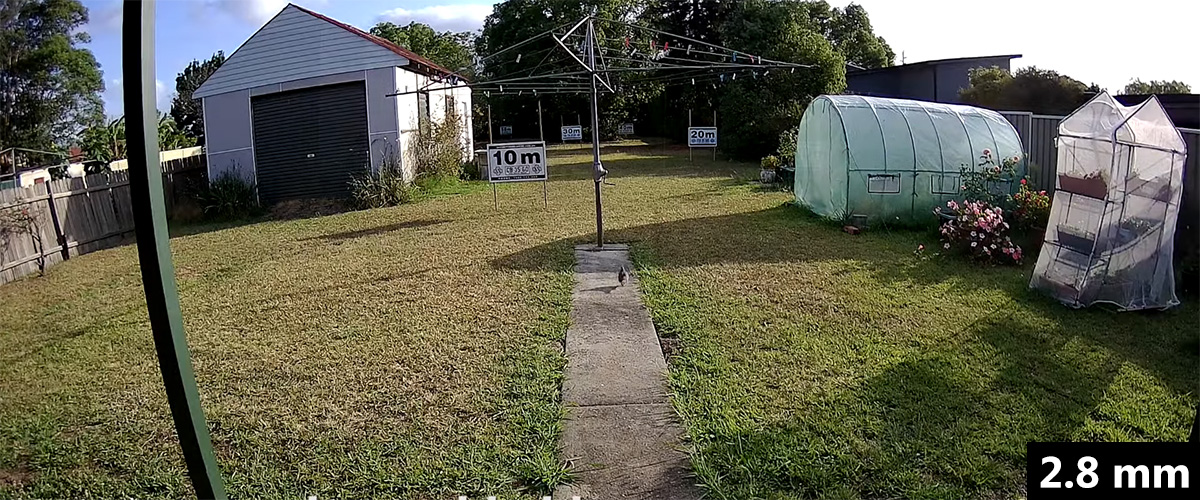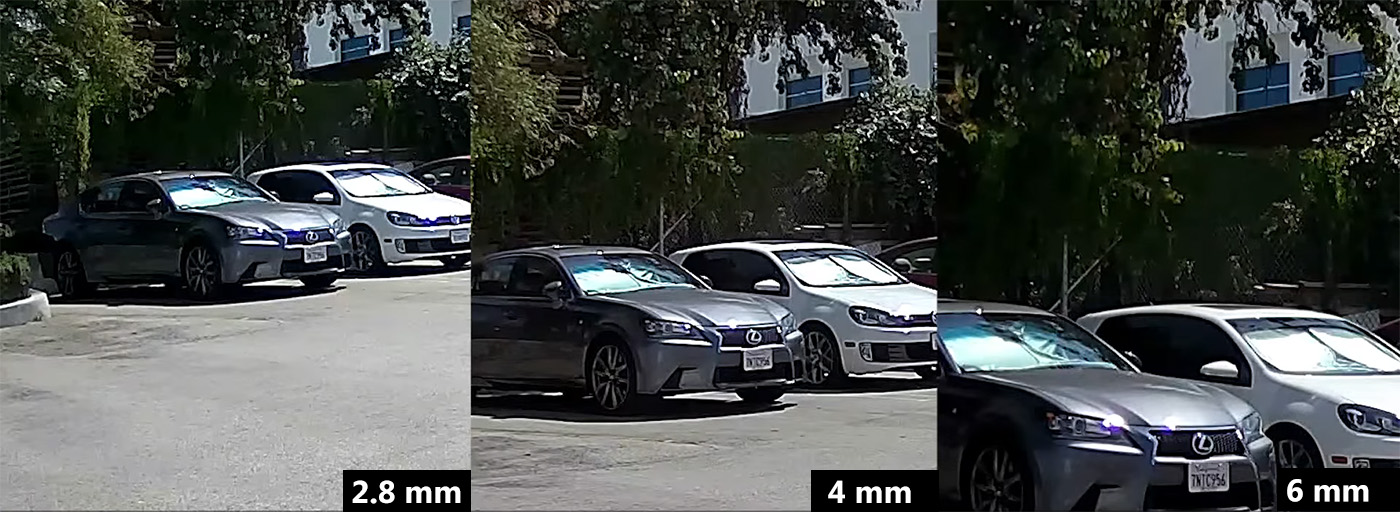A varifocal CCTV camera is a security camera that allows you to adjust the focal length, the angle and increase or decrease the optical zoom. In other words, you are able to optically zoom in and out. You can adjust the lens of the camera so it captures a wider area or you can zoom in all the way and get more details on smaller areas.
How do you zoom in on a varifocal security camera? This is usually done using a pair of knobs or rods located near the lens of the camera or if the camera has a motorized lens you can adjust it remotely.

What is a varifocal CCTV camera?
Varifocal lenses are measured by their focal length. Most varifocal security cameras will have a focal length of 2.7mm-12mm (4x zoom), but they can go up to 4.5mm-135mm (30x zoom). The longer the focal length, the more you can zoom in and see details.
On the other end, a smaller focal length means that you will have a wider field of view (FOV). A fixed lens doesn’t let you adjust the focal length, angle of view, and level of zoom. With a varifocal camera, you can adjust these settings.
 One very obvious benefit of a varifocal security camera is its use in identifying people or objects at a distance. Let’s say you have it mounted on the back of your house and zoomed out so it can see the whole backyard.
One very obvious benefit of a varifocal security camera is its use in identifying people or objects at a distance. Let’s say you have it mounted on the back of your house and zoomed out so it can see the whole backyard.
This is the FOV you want the camera recording the majority of the time, but lately, there has been a suspicious individual looking over the fence every day.
You can zoom in closer to the fence line so you can identify them in much greater detail if a crime were to happen. After a few days, they are no longer doing it so you simply return the camera to its original FOV.
Varifocal cameras: Optical Zoom vs Digital Zoom
Most fixed lens IP security cameras these days are going to have a digital zoom so you may be wondering why you would need a varifocal lens in the first place.
The reason is that a varifocal zoom isn’t going to lose picture quality as the camera zooms in while a digital zoom will. When zoomed in on a varifocal camera, it’s an optical zoom (and not digital).
Digital zoom basically zooms in on the pixels of the image, making them larger until the picture is blurry. This is the same result you would get if you open a picture on your computer and zoom in. The farther you zoom in the more pixelated or blurry the image will become.
Usually, the varifocal cameras are more expensive since the optical gear inside the camera adds to the cost. However, in certain installations, you may need to use this type of camera to avoid dead zones or to adjust them to get clearer images.
You can’t do that with a regular fixed-lens camera and the digital zoom won’t help either. You zoom in and the image gets blurry, with a varifocal camera when you zoom in the image is still clear and sharp.


A wide-angle is great for capturing a large area, but it is hard to recognize a face from more than 40 or 50 feet away, even with an HD camera. A narrow-angle makes it possible to recognize someone’s face from 75 and even up to 100 feet away with a 4MP camera using digital zoom, but the area you can cover is more limited.
The shorter the lens length (or focal length), the wider the angle of view is for that camera. For example, a 2.8mm lens will have a slightly wider angle of view than a 4mm lens. These varifocal CCTV cameras are adjustable from a 2.8mm setting to a 12mm setting.
This means that when you have the lens set to 2.8mm, or the zoomed out setting, you have roughly a 95˚ angle of view, and when you have the lens adjusted to 12mm, or all the way zoomed in, you have roughly a 30˚ angle of view (but much clearer).

When to use a varifocal CCTV camera?
A varifocal lens is a great solution when you don’t have a good mounting position near your desired focal point. With a fixed lens camera, you would need to get creative with where you are going to mount the camera or settle for the focal point being off in the distance.
With a varifocal, however, you can mount the camera further away at a more desirable mounting spot and zoom in until you get the right picture and angle.
A varifocal camera is highly recommended if you want to focus on the end of a long driveway, to a distant gate, property entrance, or on a dumpster at the far end of the parking lot to prevent illegal dumping.
Another situation where varifocal cameras are useful is when it is imperative that you get a close shot to identify a person or vehicle and have a good idea where they are going to be.
With greater distances, a wide-angle view camera will lack the ability to identify faces. It becomes necessary to use a higher millimeter lens when you are trying to identify a security threat that is further away.






